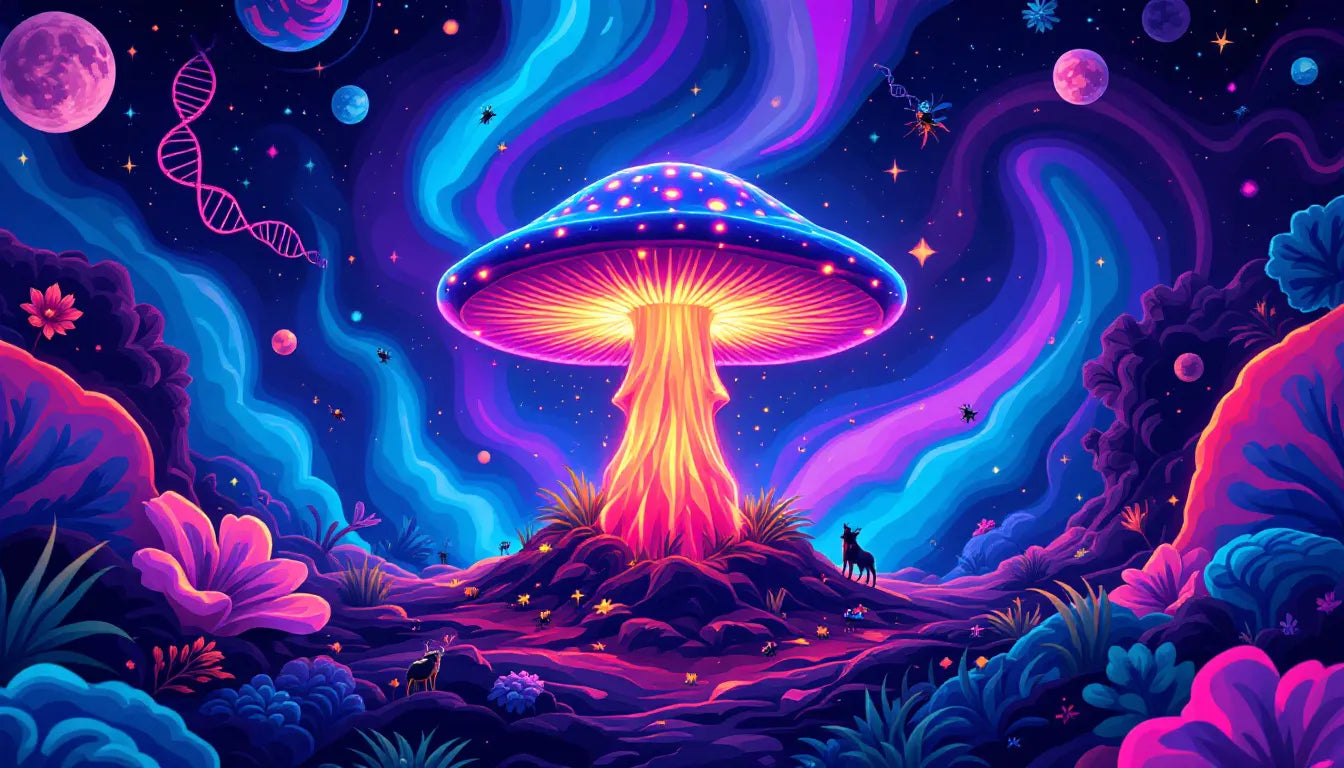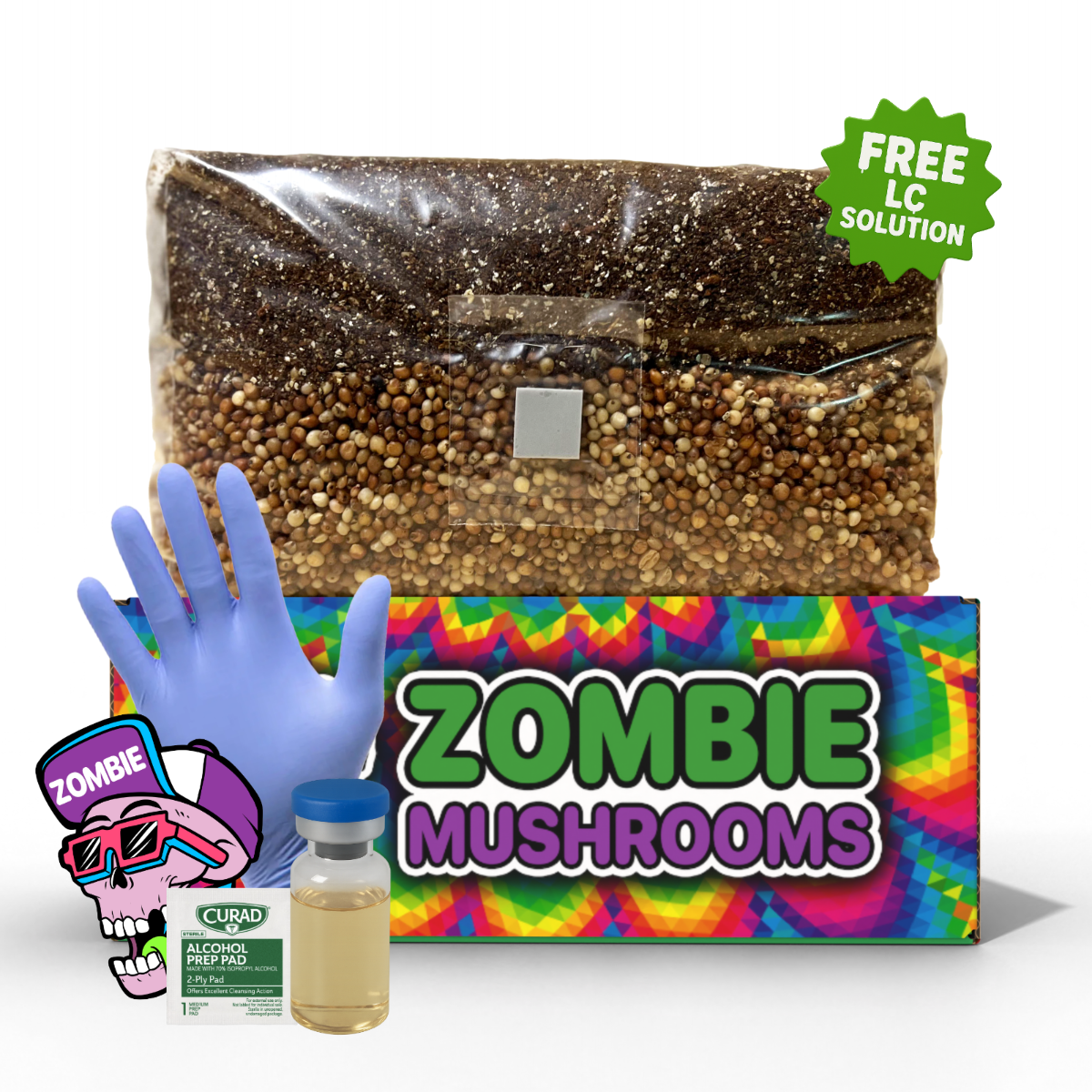- Magic mushrooms contain psilocybin, which evolved as a possible defense mechanism against predators and microbial competition.
- Genetic research suggests that psilocybin biosynthesis spread across multiple fungi species through horizontal gene transfer.
- Studies indicate psilocybin affects insect neurochemistry, potentially deterring them from consuming psychedelic fungi.
- Environmental conditions such as humidity, temperature, and soil composition influence the potency of psilocybin in fungi.
- Understanding psilocybin’s evolution could lead to better cultivation techniques and advancements in psychedelic-assisted therapy.
The Evolution of Magic Mushrooms and the Origins of Psilocybin
Magic mushrooms have fascinated humans for centuries with their mind-altering effects, but their evolutionary history is just as intriguing. Recent genetic research has shed light on how psilocybin, the psychoactive compound in these fungi, emerged over time. Scientists believe psilocybin evolved as a defense mechanism, potentially deterring predators and helping fungi thrive in competitive environments. Understanding this evolution could have major implications for psychedelic research, medicine, and even mushroom cultivation.
What Are Magic Mushrooms and How Do They Produce Psilocybin?
Magic mushrooms refer to a group of fungi containing psilocybin, a compound that induces psychedelic effects when consumed. The most well-known species belong to the Psilocybe genus, including
- Psilocybe cubensis – One of the most widely recognized psychedelic mushrooms. It thrives in tropical and subtropical regions, often growing in cattle dung.
- Psilocybe semilanceata – Commonly known as the Liberty Cap, this species is found in temperate grasslands and is one of the most potent wild psilocybin mushrooms.
- Psilocybe azurescens – Known for its especially high psilocybin content, this species grows in sandy coastal areas of the Pacific Northwest.
Psilocybin is produced through a biochemical pathway where the fungus converts tryptophan, an amino acid, into psilocybin via intermediate compounds such as 4-hydroxy-L-tryptophan. Once ingested, psilocybin is rapidly converted into psilocin, which binds to serotonin receptors in the brain. This interaction alters perception, induces hallucinations, and modifies cognition, leading to the characteristic "trip" associated with magic mushrooms.
The Largest Diversity Study of Psilocybin-Producing Fungi
Recent genetic studies have explored the evolutionary diversity of psilocybin-producing fungi. Researchers examined multiple mushroom species and discovered that the genes responsible for psilocybin production appear in several unrelated fungi. This suggests that psilocybin biosynthesis may have been transferred across species through horizontal gene transfer—a process where genetic material moves between organisms outside of traditional reproduction (Reynolds et al., 2018).
To confirm this, scientists analyzed the genomes of various psilocybin-containing fungi and found that their psilocybin-related genes were not inherited from a common ancestor but rather shared among species that evolved separately. This means different fungi gained the ability to produce psilocybin at different times, likely due to environmental pressures that favored its development.

Why Did Psilocybin Evolve?
Defense Mechanism Against Predators
One leading hypothesis is that psilocybin evolved as a defense mechanism against predators. Many insects and other small herbivores rely on neurotransmitters like serotonin to regulate their behavior, just as humans do. Studies suggest that psilocybin affects insect neurochemistry, causing confusion, disorientation, and loss of appetite. If insects that consume psilocybin-producing fungi experience negative effects, they may avoid these mushrooms in the future, increasing the fungus's survival chances (Fricke et al., 2017).
Competition Among Fungi
Another theory links psilocybin evolution to competition among fungi in resource-limited environments. Fungi growing in decaying wood, dung, or nutrient-rich soil must compete against bacteria and other fungi. Some researchers propose that psilocybin may act as a chemical deterrent—either by suppressing the growth of rival microbes or by influencing microbial communities in ways that benefit psilocybin-producing fungi.
By altering microbial ecosystems in their favor, psilocybin-producing fungi may obtain better access to nutrients, improving their survival and reproductive success.
Symbiotic or Mutualistic Benefits
Some researchers also speculate that psilocybin may have an indirect benefit, potentially fostering symbiotic relationships with other organisms, such as mammals. By inducing hallucinations and expanding consciousness in humans, these mushrooms may have unintentionally encouraged their widespread cultivation and dispersal—though this evolutionary possibility remains speculative.

The Role of Environment in Psilocybin Production
Environmental conditions significantly influence both the presence and potency of psilocybin in fungi. Some key factors include
Habitat and Substrate
Magic mushrooms thrive in environments rich in decaying organic material, such as forests, grasslands, and dung-heavy areas. These habitats provide the necessary nutrients for fungal growth while also exposing mushrooms to ecological pressures that may have driven psilocybin’s evolution.
Climate and Humidity
Fungi grow best in humid environments with moderate to high moisture levels. Many psilocybin-containing mushrooms are found in regions with consistent rainfall, which supports fungal growth and encourages psilocybin production.
Soil Composition
Certain minerals and organic compounds in the soil can influence psilocybin potency. For example, fungi growing in nitrogen-rich environments may produce higher concentrations of psilocybin due to the availability of amino acid precursors.

Psilocybin and Evolutionary Convergence
One of the most fascinating discoveries in psilocybin research is that magic mushrooms did not all evolve from a single psychedelic ancestor. Instead, multiple fungal species developed the ability to produce psilocybin independently—an example of evolutionary convergence (Ruffell et al., 2020).
A possible mechanism for this evolutionary pattern is horizontal gene transfer, in which genetic material is exchanged between unrelated species. Scientists believe that, at some point, fungi that could produce psilocybin shared their genetic encoding with other fungi occupying similar environments. This enabled different species to acquire the ability to synthesize psilocybin without direct evolutionary inheritance.

Implications for Psychedelic Research and Medicine
Understanding the evolution of psilocybin isn't just an academic pursuit—it has significant implications for medicine, mental health research, and biotechnology.
Advancements in Psychedelic-Assisted Therapy
Recent clinical trials have shown that psilocybin has promising therapeutic potential for mental health disorders such as
- Depression – Studies suggest psilocybin-assisted therapy can provide long-term relief, especially for treatment-resistant depression.
- PTSD (Post-Traumatic Stress Disorder) – Psilocybin promotes neuroplasticity, which may help rewire trauma-related thought patterns.
- Anxiety – Research indicates that psilocybin can improve well-being and reduce existential distress, particularly in terminally ill patients.
If scientists better understand how psilocybin evolved, they may be able to optimize its therapeutic use and develop synthetic alternatives that mimic its effects while reducing risks.
Biotechnological Applications
By mapping the biosynthetic pathways of psilocybin-producing fungi, researchers could potentially engineer new fungal strains or even non-fungal organisms to produce psilocybin more efficiently. Advances in biotechnology could lead to
- Cost-effective psilocybin production for medical applications
- Genetically modified fungi optimized for higher psilocybin yields
- New synthetic psychedelics based on naturally evolved compounds
Final Thoughts: The Future of Psilocybin Research
The evolution of magic mushrooms highlights a remarkable case of chemical adaptation shaped by ecological pressures, genetic exchange, and environmental factors. What originally evolved as a survival mechanism has now become the focal point of psychedelic medicine and neuroscience.
As research continues, further insights into psilocybin evolution could revolutionize mental health treatment, enhance our understanding of fungal biology, and even lead to new breakthroughs in drug development. Whether viewed through the lens of evolution, medicine, or human culture, magic mushrooms remain one of the most fascinating organisms on Earth.
Citations
-
Fricke, J., Lenz, C., & Wick, J. (2017). Evolution of psilocybin biosynthesis in mushrooms. Applied Microbiology and Biotechnology, 101(5), 1859–1870.
-
Reynolds, H. T., Vijayakumar, V., & Glatfelter, K. J. (2018). Horizontal gene transfer of psilocybin biosynthesis clusters in Psilocybe fungi. Evolution Letters, 2(1), 88-98.
-
Ruffell, S., Spriggs, M., & Barnes, N. (2020). Psilocybin and its implications for ecology and neuroscience. Journal of Ethnopharmacology, 258, 112895.



